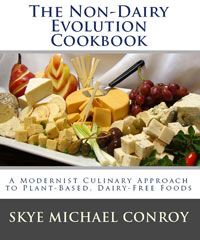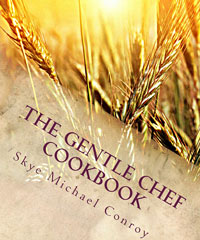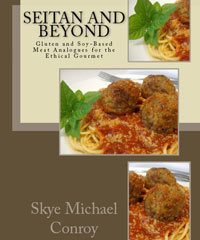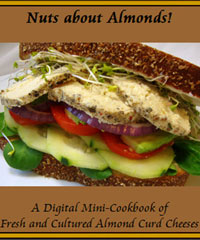Pressure Cookers – How They Work
Pressure cookers work on one basic principle: Steam pressure. A sealed pot, heated on a stovetop or by an electrical heating element, generates steam under pressure which helps food cook faster. The sealed pot is constructed with a safety valve that controls the steam pressure inside. Pressure cooking can be used for quick simulation of the effects of long braising (which refers to oven cooking foods partially submerged in liquid). Almost any food which can be cooked in steam or water-based liquids can be cooked in a pressure cooker. Foil-wrapped meat analogues that are typically baked or steamed can also be cooked in a pressure cooker, but different rules apply.
The high pressure steam of pressure cooking has two major effects:
1. It raises the boiling point of the water or other liquid in the pot from 212°F (100°C) to 250°F (121°C). Exposed foods are subjected to this higher boiling temperature and this causes the food to cook faster. Most pressure cookers have a cooking pressure setting between 0.8 – 1 bar (11.6 – 15 psi) above sea level pressure (sea level pressure is around 1.016 bar) so a pressure cooker operates at 1.816 to 2.016 bar. The standard cooking pressure of 15 psi (pounds per square inch) above sea level pressure was determined by the United States Department of Agriculture in 1917. At this pressure, water boils at 250°F (121°C). So there really is nothing special about pressure cooking other than it raises the boiling point of water or liquids in order to steam/cook foods at a higher temperature than that of a conventional steamer.
2. This increased steam pressure forces liquid into foods which are exposed to the steam. This not only helps the food cook faster but it also tenderizes certain foods like grains, legumes and vegetables, much faster than by conventional steaming or simmering.
However, meat analogues sealed in foil packages respond differently than exposed foods. In a sealed package, the gluten dough (or gluten and tofu combination) is not exposed to the direct steam, since the foil serves as a moisture barrier. The water in the pressure cooker is not being forced into the dough. Therefore the package is simply being steamed at a boiling temperature of 250°F (121°C), as opposed to being steamed in a conventional steamer at 212°F (100°C) or baked in an oven at a common temperature of 350°F (180°C).
While pressure cooking may cook the dough faster than a conventional steamer, it will not necessarily cook the dough faster than in an oven set at a higher temperature. Therefore, the foil-wrapped dough still requires pressure cooking for the suggested oven cooking time in order to cook all the way through properly. And while it may seem unusual to pressure cook foods for 2 hours (as an example), it is important to remember that we’re not cooking exposed foods – we’re cooking gluten dough sealed in a foil package.
There may seem to be some discrepancy because the pressure cooker is cooking at a lower temperature than the oven but for the same amount of time. This is because the oven cooks using radiant heat, which is less efficient than pressurized steam. The radiant heat of the oven takes much longer to raise the internal temperature of the foil-wrapped package than it would in a pressure cooker. So a pressure cooker can cook just as effectively at 250°F (121°C) compared to oven-baking at 350°F (175°C) for the same amount of time.
In other words, a pressure cooker cooks effectively at a lower heat while the oven needs a higher heat to cook just as effectively. In a similar manner, convection or fan-assisted ovens circulate the heat more evenly than a conventional radiant heat oven and this is why they raise the internal temperature of the sealed foiled package faster (which can lead to over-cooking if not adjusted for this difference).
Notes about Oven Temperatures
Meat analogue recipes that require oven-baking in my cookbooks have been prepared in my own radiant heat oven which is calibrated to the correct temperature. I have placed 2 different brands of oven thermometers in my oven, one on the top shelf and the other on the bottom, to ensure accuracy of cooking temperatures when preparing my recipes. When my oven is preheated to 350°F, it reaches that temperature and the gas flame switches off. When my oven door is opened and a cold foil package is placed inside, the temperature immediately begins to drop by as much as 75 to 100 degrees Fahrenheit. The gas flame then switches back on to raise the temperature back to 350°F and the flame switches off again. This cycle repeats during the remaining cooking time. So the package is not cooked consistently at 350°F.
Convection or fan-assisted ovens are more efficient at maintaining an even heat, so these cycles in temperature variations are not as dramatic. Convection ovens work by distributing heat evenly around the food by circulating hot air with a fan, removing the blanket of cooler air that surrounds food when it is first placed in an oven and allowing food to cook more evenly at a lower temperature than in a conventional oven (this is known as convective heat transfer). For this reason, baking meat analogues at the same temperature as a radiant heat oven can lead to overcooking and dry results. To avoid overcooking, switch the fan off or adjust by lowering the oven temperature by 25°F/10°C.
Pressure Cooking Meat Analogues versus Oven-Baking – Advantages and Disadvantages
Pressure cooking foil-wrapped meat analogues has its own advantages and disadvantages over oven-baking. Based upon my own research and experimentation, I have found that pressure cooking does not really save any more time over oven-baking when cooking foil-wrapped meat analogues (due to the reasons discussed previously). Also, many of the larger foil-wrapped roasts may not fit into the compact chamber of a pressure cooking pot.
One advantage of pressure cooking is for those who have trouble with foil-wrapped meat analogues bursting while oven-baking. Rupturing of the package is due to steam pressure which builds up inside the package. The pressure inside the package is greater than the surrounding pressure in the oven, so the package may burst if wrapped improperly or insufficiently in order to equalize the pressure. This can not only ruin the finished product but can create a big mess in the oven. With pressure cooking, the pressure inside the cooking chamber is greater than that within the foil package, so bursting does not occur, even if the package is wrapped improperly or insufficiently.
Another advantage to pressure cooking is for those who have inconsistent oven temperatures or ovens that run too hot. This has been an ongoing issue for some preparing the Shredded Chikun roast in my Seitan and Beyond Cookbook. In this case, the final product is becoming too dry and bread-like, rather than moist and shreddable. I have suggested in my cooking group to simply lower the oven temperature by 25°F/10°C, but that has not resolved the issue for some. So pressure cooking may be the best option.
And yet another and very distinct advantage is that pressure cooking does not overheat the kitchen during the warm summer months, as compared to an oven.
I still recommend following the cooking instructions as written in my cookbooks, since I have always achieved good results using those methods. But if you wish to experiment with cooking foil-wrapped meat analogues in a pressure cooker, I have listed some recommendations below. Pressure cooking is still new territory for me. I don’t know all the answers and others may find more efficient and effective ways to cook my recipes. But I encourage everyone to try the recommendations at least once before venturing off on your own. You may not agree with my recommendations, and that’s okay. If you already have experimented with this, you may be achieving results at reduced cooking times that are acceptable to you, and that’s okay too. But I have my own expectations as to what is acceptable, and I’m basing my conclusions upon my own comparisons between the two cooking methods and the results I’m achieving.
General Guideline for Pressure Cooking Foil-Wrapped Meat Analogues
(Except Pepperoni, Chorizo and the Individually-Wrapped Sausages)
Wrap the dough in foil as directed just as you would for baking. Parchment paper can always be used as a barrier between the dough and the foil if desired. Be sure the package is placed on a heat-proof trivet or stand inside the cooking chamber. It should never sit directly in water. WATER MUST ALWAYS BE USED WHEN PRESSURE COOKING. Pressure cook at high pressure for the same amount of time as recommended when baking (I have tried reducing the time and have found that the dough isn’t cooked all the way through to my satisfaction). Quick release steam and then remove from the cooker to cool. Chill the package before finishing as directed in the recipes.
Note: At this time I don’t recommend using parchment paper (or other plant substances) as the only wrapping barrier inside the chamber, at least not until I’ve had a chance to experiment with this myself. The recipes contain a precise amount of water and parchment paper, or other permeable plant substances, could allow excess moisture to be forced into the dough. However, feel free to experiment on your own and at your own risk.
General Guideline for Pressure Cooking Foil-Wrapped Pepperoni and Chorizo
The Pepperoni (Gentle Chef Cookbook and Seitan and Beyond Cookbook) and the Chorizo sausage (Seitan and Beyond Cookbook) are long sausages that would not typically fit into a pressure cooker. Because of their length, I have found that these sausages are more prone to foil bursting when oven-baking than any of my other meat analogues. This is due to weakness in the foil along the length of the sausage if not wrapped sufficiently. So pressure cooking has a distinct advantage over oven-baking in this respect. However, the dough will need to be divided in half and 2 shorter foil cylinders will need to be created to fit inside the cooking chamber.
Wrap each portion of dough in foil as directed just as you would for baking. Parchment paper can always be used as a barrier between the dough and the foil if desired. Be sure the packages are placed on a heat-proof trivet or stand inside the cooking chamber. They should never sit directly in water. WATER MUST ALWAYS BE USED WHEN PRESSURE COOKING. Pressure cook at high pressure for 45 minutes. Switch the unit off but DO NOT quick release steam. Allow the packages to rest inside the cooker for an additional 45 minutes before removing (the sausages will continue to cook even with the unit off as long as the pressure is not released and the lid is not opened). Chill the packages before finishing as directed in the recipes.
General Guideline for Pressure Cooking Individually-Wrapped Sausages
The individually wrapped sausages from the Gentle Chef Cookbook and Seitan and Beyond Cookbook are typically steamed conventionally, which I still recommend for the best results, however they can also be pressure cooked.
Wrap each portion of dough in foil as directed just as you would for conventional steaming. Parchment paper can always be used as a barrier between the dough and the foil if desired. Be sure the packages are placed on a heat-proof trivet or stand inside the cooking chamber. They should never sit directly in water. WATER MUST ALWAYS BE USED WHEN PRESSURE COOKING. Pressure cook at high pressure for 20 minutes (15 minutes for the Maple Sage Sausage Links). Switch the unit off but DO NOT quick release steam. Allow the packages to rest inside the cooker for an additional 15 minutes (10 minutes for the Maple Sage Sausage Links) before removing (the sausages will continue to cook even with the unit off as long as the pressure is not released and the lid is not opened). Chill the packages before finishing as directed in the recipes.
Pressure Cooking Seitan as an Alternative to Simmering
In my humble opinion, the joy of cooking not only involves eating and enjoying the food we create but experiencing the cooking process and being actively involved in it. There are some methods that I don’t feel can be improved upon and this is one of them. If we’re always looking to change the process for the sake of convenience and time management – or simply because it’s the latest trend – we lose a great deal from the experience. There’s nothing quite like the aroma of a fragrant vegetable broth that fills the kitchen while seitan gently simmers in the cooking pot.
Visually managing the cooking process is important too because we can see what’s going on in the cooking pot, while in a closed cooking chamber we cannot. When simmering seitan, the broth is gradually absorbed by the dough in a controlled manner, whereas in a pressure cooker the broth is forced into the dough under pressure. For the sake of convenience, or for “set it and forget it” cooking, I think a slow-cooker would be a better option since it cooks gently. So at this time, I will not be exploring pressure cooking as an alternative to simmering seitan.
As a chef, I’m a bit “old school” when it comes to “tried and true” methods. Don’t get me wrong, the pressure cooker is excellent for certain cooking applications – but just not all applications. If you choose to experiment with this method as an alternative to simmering, that is entirely up to you and I wish you much success.






